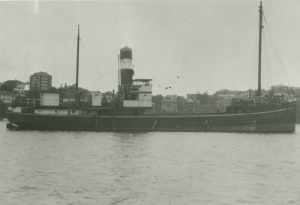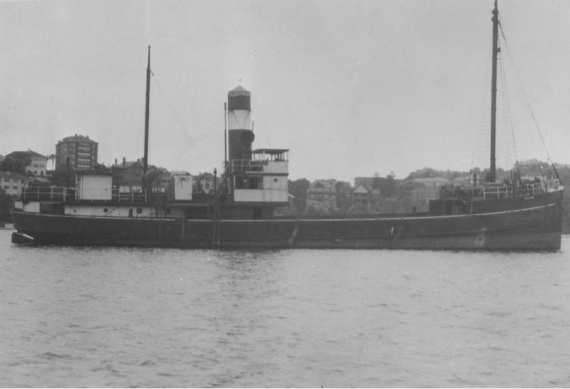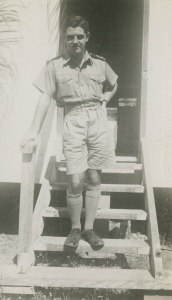HMAS Narani
| Type |
Auxiliary Minesweeper |
|---|---|
| Builder |
E Wright, Tuncurry, NSW |
| Commissioned |
11 June 1941 |
| Decommissioned |
22 August 1944 |
| Fate |
Returned to her owners, Illawarra and South Coast Steam Navigation Co Ltd, Sydney, 10 July 1946 |
| Dimensions & Displacement | |
| Displacement | 381 tons (gross) |
| Length | 148 feet 6 inches |
| Beam | 33 feet 2 inches |
| Draught | 8 feet 7 inches |
| Performance | |
| Speed | 8 knots |
| Complement | |
| Crew | 3 officers, 22 sailors |
| Armament | |
| Guns |
|
| Other Armament | Depth charges |
Throughout the course of World War II, the presence of enemy mines and submarines in Australian waters was of great concern to the Government and the Naval Board. In August 1940, the RAN Naval Board informed the Government that it believed that a total of 59 local defence vessels were required for minesweeping and anti-submarine operations in Australian coastal waters, a large increase on the twelve auxiliary minesweepers already employed in Australian waters. This was to be made up from a mix of new Australian-built Bathurst Class corvettes and vessels requisitioned from coastal trade. This number was later increased and the numbers of both corvettes and requisitioned vessels required increased commensurately.
The wooden steamer Narani was requisitioned for naval service on 5 December 1940. After fitting out as an auxiliary minesweeper she commissioned as HMAS Narani at Sydney on 11 June 1941 under the command of Lieutenant Alan GS Hill, RANR(S) who served as her Commanding Officer for the duration of her commission.
Narani served first in the Sydney area and on 1 October 1941 arrived at Melbourne where she joined Minesweeping Group 54. On 10 November 1941 she sailed from Melbourne to join Minesweeping Group 77 based at Newcastle, and later in 1943 was re-homeported back to HMAS Penguin in Sydney.
Sub Lieutenant Bevan Mitchell, RANVR, recalls his posting to Narani in 1943:
Wooden-hulled and built primarily for the timber trade along the NSW coast, it boasted twin screws, which, believe it or not, were of unequal diameter, suggesting some accident in the past followed by repair with the best available. To add to this curiosity was a chain rudder, something I’d never seen before...She was equipped to deal with all the mine types then in use by the enemy: contact, magnetic and acoustic. Her top speed was around 7-8 knots, 4½ with sweeps in position.
…we generally slipped at 7:00am, heading out to sea to commence the day’s sweeping - according to a pattern laid down for us in directions from the Port Minesweeping Officer...Normally we would carry on sweeping all day until nightfall, unless the weather became too foul for minesweeping to continue. When all was secured back at the wharf the usual practice was for one third of the ship’s company to be given shore leave, expiring at 6:00am, this being shortened now and then to midnight.
Narani decommissioned at Sydney on 22 August 1944 after more than three years conducting operations off the Australian east coast as far north as Brisbane and as far south as Jervis Bay.
She was returned to her owners on 10 July 1946, sold on to an owner in New Guinea in 1951 and deleted from the Lloyd’s Register in 1955.





